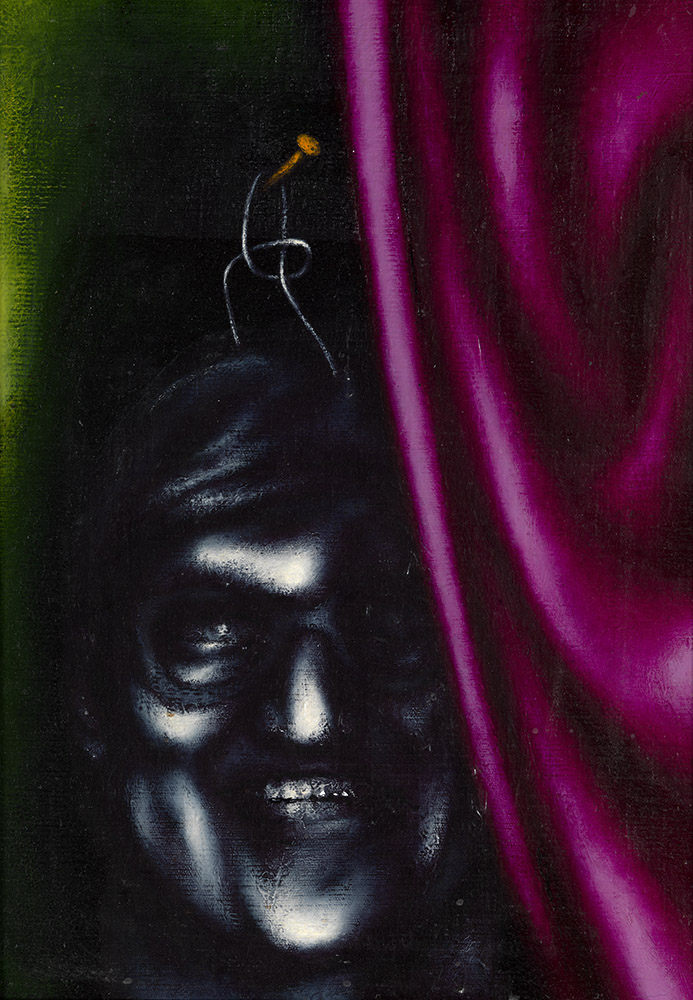MacDougall Auctions 2-3 December 2009
2 December 2009

* § 501. TSELKOV, OLEG B. 1934
Portrait of a Collector signed, inscribed in Cyrillic and dated 1971 on the reverse
Oil on canvas, laid on panel, 55 by 39.5 cm.
30,000-40,000 pounds
Provenance: Acquired directly from the artist by the present owner.
Private collection, USA.
Authenticity has been confirmed by the artist.
Related literature: For similar works, see Roger Pierre Turine, Oleg Tselkov, Bonfi, Moscow, 2002.
In the early 1970s, Tselkov suddenly, and rather unexpectedly, turned his attention from the “featureless creature”, which had been central to his work as recently as the 1960s, to portrayals of specific human faces. He began to paint a series of portraits featuring his closest friends and family. The undisputed triumphs within this series of his work which, despite being painted five years apart, are extremely similar in terms of composition are Portrait of George Costakis and Portrait of a Collector, presented here at the auction.
The spatial architectonics of this work take the form of a theatrical set. Although on this stage there are no boards to walk, and the figures are simply suspended in mid air, we do have a clear frontal view of them, and a curtain, drawn over to one side, is ever present. “All the world’s a stage, and all the men and women merely players”. For Tselkov, this Shakespearean quote represents a step on his metaphorical path towards a simulacrum, a mask. The face portrayed in the portrait still bears an obvious resemblance to its model, but it has been entirely emancipated from the trammels of human existence. With its torso removed, it is almost as if a painted mask has been hung on a nail by the same string that is supposed to hold the mask over the owner’s face.
Notwithstanding the seemingly unambiguous place of the person on the painting on this world-as-stage, the rendition of face as a consciously chosen social role conceals a denial of an immediate collision between the inner and outer person, and the ridicule and violation of official boundaries. Tselkov develops the logic of inversion by employing the concept of total theatricality, which proved extremely popular in the 20th century, and was proposed by Nikolai Yevreinov and Luigi Pirandello. As such, even in the recognisable “realistic” portraits and self portraits of the 1970s, the artist remains true to the principal theme of his creative oeuvre; namely the creation of a never ending gallery of characters within humanity’s theatre of the absurd.
Notes on symbols:
* Indicates 5% Import Duty Charge applies.
Ω Indicates 20% Import Duty Charge applies.
§ Indicates Artist's Resale Right applies.
† Indicates Standard VAT scheme applies, and the rate of 20% VAT will be charged on both hammer price and premium.